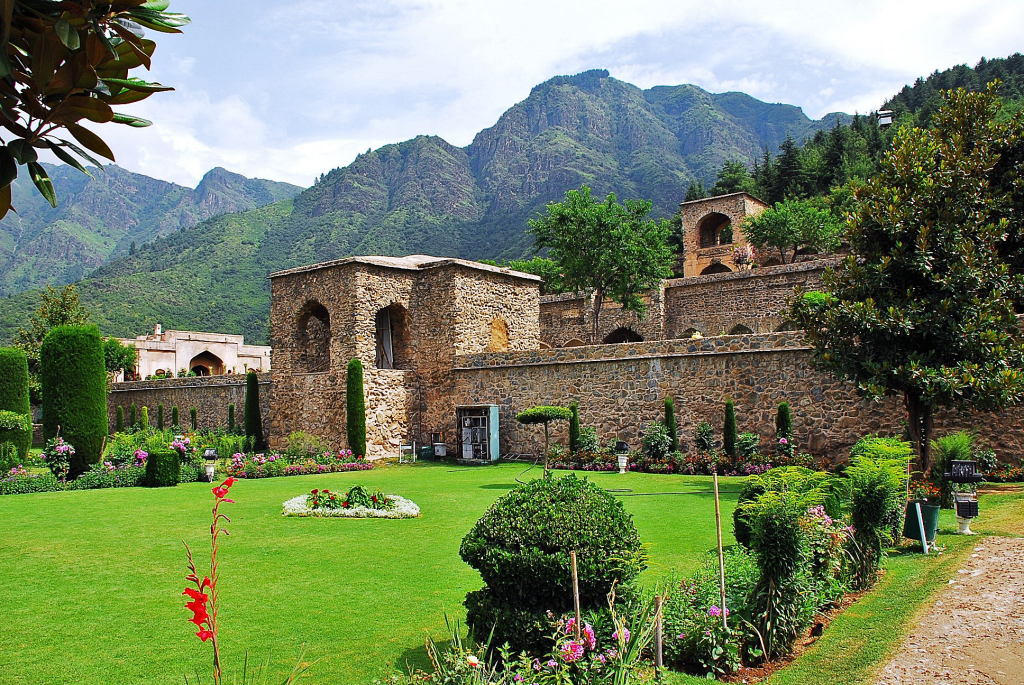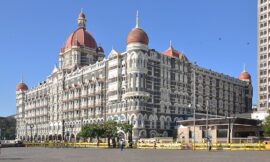Pari Mahal, meaning “Palace of Fairies,” is an exquisite historical monument located in Srinagar, the summer capital of Jammu and Kashmir, India. Situated atop Zabarwan mountain range overlooking the Dal Lake, Pari Mahal is a stunning example of Mughal architecture and design, blending elements of Persian and Islamic styles.
Built during the reign of Dara Shikoh, the eldest son of Mughal Emperor Shah Jahan, in the mid-17th century, Pari Mahal served as a pleasure garden and residential palace for Dara Shikoh and his disciples. The site was chosen for its strategic location, offering panoramic views of the surrounding landscape, including the Dal Lake, the city of Srinagar, and the snow-capped peaks of the Himalayas.
Pari Mahal is renowned for its unique architectural features, including a series of terraced gardens, cascading fountains, and intricately designed pavilions and arched passageways. The layout of the palace complex is designed to maximize the beauty of its natural surroundings while providing a sense of tranquility and serenity for its inhabitants.
The palace itself consists of several interconnected buildings arranged in a symmetrical layout, with central domed pavilions flanked by smaller chambers and galleries. The interior of Pari Mahal is adorned with exquisite stucco work, delicate frescoes, and intricate latticework, showcasing the artistic mastery of Mughal craftsmen.
One of the most striking features of Pari Mahal is its terraced gardens, which are meticulously landscaped with a variety of flowering plants, fruit trees, and aromatic herbs. The gardens are divided into several levels, connected by stone staircases and pathways, and offer a tranquil retreat for visitors to relax and enjoy the breathtaking views of the surrounding landscape.
Pari Mahal also has a rich historical and cultural significance, serving as a center for learning and intellectual exchange during the Mughal era. Dara Shikoh, a renowned scholar and mystic, is said to have held philosophical discussions and spiritual gatherings at the palace, attracting scholars, poets, and Sufi saints from across the region.
Over the centuries, Pari Mahal fell into disrepair and was abandoned, but in recent years, efforts have been made to restore and preserve this architectural gem for future generations to enjoy. Today, Pari Mahal is a popular tourist attraction in Srinagar, offering visitors a glimpse into Kashmir’s rich cultural heritage and architectural legacy.
In addition to its historical and architectural significance, Pari Mahal is also a symbol of Kashmir’s cultural diversity and religious tolerance. The palace complex reflects the syncretic traditions of the Mughal era, blending elements of Persian, Islamic, and Hindu architecture, and serving as a testament to the region’s long history of cultural exchange and coexistence.
In conclusion, Pari Mahal is a jewel of Kashmir’s architectural heritage, a testament to the artistic and cultural achievements of the Mughal era. With its stunning gardens, exquisite architecture, and rich historical significance, Pari Mahal continues to enchant visitors with its timeless beauty and serene ambiance, offering a glimpse into the splendor of Kashmir’s past.



